Hosts
Dheeraj Pandey – Co-founder and CEO of DevRev, former CEO of Nutanix
Amit Prakash – Co-founder and CTO of ThoughtSpot, former engineer at Google and Microsoft
Guest
Dr. Sonika Johri – Founder and CEO, Coherent Computing. Formerly at Intel and IonQ. PhD in condensed matter physics from Princeton University.
Summary
In this episode of Effortless, hosts Dheeraj Pandey and Amit Prakash sit down with physicist and entrepreneur Dr. Sonika Johri to break down one of the most complex—and promising—frontiers in computing: quantum. From the principles of superposition and entanglement to how real quantum hardware is built and programmed, the conversation traces Sonika’s journey from academia to industry, and now to entrepreneurship.
They explore why quantum computing matters, what it can (and can’t yet) do, and how her startup Coherent Computing is aiming to democratize access to quantum models—without requiring every developer to hold a PhD in physics. If the last decade belonged to cloud and AI, the next few decades may be shaped by quantum. This episode is a foundational primer for anyone curious about how that future unfolds.
Key Takeaways
Quantum is not faster computing—it’s different computing. It leverages properties like superposition and entanglement to solve problems that classical computers simply can’t scale to solve.
Some problems are inherently quantum. Modeling molecules, simulating electrons, and solving complex optimization problems are fundamentally limited by classical computing. Quantum offers a path forward.
Hardware is still early, but real. Companies like IonQ and IBM are already offering 10+ qubit machines over the cloud, with meaningful—if limited—applications.
Programming is in its infancy. Writing quantum code today is like programming mainframes in the 1970s. There’s a massive need for higher-level abstractions and reusable frameworks.
Sonika’s mission is abstraction. Her startup Coherent Computing is building quantum models and tools so that domain experts can use quantum power without needing to understand qubit gates or wavefunctions.
Entanglement isn’t magic—it’s interaction. When two qubits interact, they become statistically connected. It’s not spooky action—it’s deeply physical.
Quantum AI is more than just fast AI. The potential for new forms of reasoning, modeling, and intelligence is enormous—if we build the right tools to harness it.
In-Depth Insights
1. A Physicist’s Path to Quantum Tech
Sonika Johri’s journey to quantum computing began with a high school encounter with Einstein’s relativity. After studying Engineering Physics at IIT Delhi and earning a PhD in condensed matter physics from Princeton, she entered the industry via Intel, transitioning from classical software into one of their first quantum research roles. Later, at IonQ, she led the quantum applications team, bringing quantum to life for enterprises like Hyundai and Fidelity.
2. What Makes Quantum Different
Quantum computing isn’t just a faster version of classical computing—it’s fundamentally different. Qubits can exist in multiple states (superposition) and become entangled, allowing quantum systems to represent and process an exponential number of states. This enables breakthrough algorithms like Grover’s and Shor’s, offering speedups that are impossible with classical systems.
3. Classical Limits, Quantum Advantages
Despite decades of innovation in classical computing, certain problems remain practically unsolvable due to their exponential complexity. Quantum computing offers a path forward in domains like:
Quantum Chemistry – Simulating molecules with many interacting electrons.
Material Discovery – Predicting properties of novel compounds before they’re built.
Optimization – Solving complex routing, logistics, and scheduling problems.
Machine Learning – Encoding and manipulating high-dimensional probability distributions.
Cryptography – Running algorithms like Shor’s to break widely used encryption methods.
Quantum computers can tackle these problems more efficiently—sometimes reducing exponential time to linear or quadratic—unlocking previously unreachable solutions.
4. Hardware Meets Software
At Intel, Sonika helped build early quantum software stacks for devices with just 2–5 qubits. At IonQ, she led development of practical quantum applications, including a quantum copula to model stock prices for Fidelity. These efforts underscored the importance of co-design: hardware and software must evolve together for quantum systems to deliver real-world value.
5. The Programming Paradigm Shift
Programming quantum systems today requires low-level control over individual qubits. But Sonika envisions a future where developers use high-level abstractions—quantum data structures, reusable logic, and ML libraries—similar to Python in classical computing. Her startup, Coherent Computing, aims to make quantum programming intuitive and accessible to domain experts across industries.
6. Toward Quantum AI
Quantum systems naturally handle complex probability distributions, making them ideal for next-generation AI. Sonika sees potential in quantum-enhanced ML models, reversible generative architectures, and hybrid quantum-classical frameworks that mimic natural intelligence in new ways. Coherent Computing is actively exploring these possibilities across domains like materials, climate, and more.
Host Biographies
Dheeraj Pandey
Co-founder and CEO of DevRev, and former CEO of Nutanix. Dheeraj has led multiple tech ventures and is passionate about AI, design, and the future of product-led growth.
LinkedIn | X (Twitter)
Amit Prakash
Co-founder and CTO of ThoughtSpot. Formerly an engineer at Google and Microsoft. Amit has deep expertise in distributed systems, data platforms, and machine learning.
LinkedIn | X (Twitter)
Guest Biography
Dr. Sonika Johri
Founder and CEO of Coherent Computing, a quantum software startup aiming to make quantum models accessible through developer-friendly tools. She has a PhD in condensed matter physics from Princeton.
She has worked previously at Intel and IonQ, where she helped build the quantum software stack and worked on applications in finance, chemistry, and optimization.
LinkedIn | X (Twitter)
Episode Breakdown
{00:00:00} Sonika’s Quantum Journey – From growing up on Indian army bases to building quantum systems at Intel and IonQ.
{00:03:00} Early Inspirations – How a book on Einstein sparked a lifelong pursuit of physics over medicine.
{00:06:30} What Is Condensed Matter Physics? – Understanding emergence and electron interactions in complex systems.
{00:12:00} Qubits, Superposition & Entanglement – The core concepts that make quantum computing fundamentally different.
{00:20:00} Why Quantum Matters – Tackling problems in chemistry, logistics, and AI that classical computing can’t solve.
{00:28:00} Inside Quantum Hardware – How trapped ions, superconducting circuits, and lasers bring qubits to life.
{00:35:00} From Gates to Abstractions – The need for higher-level programming tools to make quantum accessible.
{00:43:00} Quantum in the Real World – Use cases from Fidelity, Hyundai, and Airbus running on IonQ systems.
{00:52:00} The Future of Quantum AI – New computational models enabled by reversibility and entanglement.
{01:00:00} Quantum & Cryptography – How scaled quantum systems could render current encryption obsolete.
{01:05:00} Coherent Computing’s Mission – Making quantum computing usable by scientists and engineers everywhere.
{01:12:00} What’s Next for the Podcast – Future episodes will dive deeper into compilers, developer tools, and real-world quantum stacks.
{01:20:00} Final Reflections – Why quantum is no longer theoretical—and why we all need to start paying attention.
References and Resources
Coherent Computing
Sonika’s startup focused on simplifying quantum computing by developing tools and software to make quantum models accessible. Coherent Computing’s mission is to bridge the gap between complex quantum physics and practical application, allowing non-experts to take advantage of quantum power in fields like AI, materials science, and climate modeling.
Learn more: Coherent Computing’s Official Website
IonQ –
IonQ is a leading provider of trapped-ion quantum computers. This company uses trapped ions (charged atoms) manipulated by lasers to build quantum processors. IonQ’s quantum systems are one of the most well-established approaches in the field and offer cloud-based access to their quantum machines, allowing developers to run quantum algorithms remotely.
Learn more: IonQ
AWS Braket
AWS Braket is Amazon’s cloud service for quantum computing, providing access to a variety of quantum computing hardware from different providers, including IonQ, D-Wave, and Rigetti. It allows developers and researchers to experiment with quantum algorithms without needing to set up or maintain physical quantum hardware.
Learn more: AWS Braket
Shor’s Algorithm
Shor’s Algorithm is a quantum algorithm that efficiently factors large integers, which is a computationally hard problem for classical computers. This algorithm threatens the security of widely used cryptographic systems, such as RSA encryption, by enabling quantum computers to break encryption schemes that are secure against classical attacks.
Learn more: Shor’s Algorithm Explained
Grover’s Algorithm
Grover’s Algorithm is another quantum algorithm designed for searching unsorted databases more efficiently than classical algorithms. While classical search algorithms require O(N) time (where N is the number of items), Grover’s algorithm can search in O(√N) time, providing a quadratic speedup.
Learn more: Grover’s Algorithm Overview
OpenQASM
OpenQASM (Quantum Assembly Language) is a high-level programming language developed by IBM for quantum computing. It is designed to provide a way for developers to write quantum algorithms that can then be compiled into quantum circuits that can be executed on quantum hardware.
Learn more: OpenQASM Documentation
Double-Slit Experiment
The Double-Slit Experiment is one of the foundational experiments in quantum mechanics, demonstrating the wave-particle duality of matter and light. When particles like electrons pass through two slits, they create an interference pattern, suggesting they are acting as waves, not just particles. This behavior challenges classical physics and is central to understanding quantum superposition.
Learn more: Double-Slit Explained
Bell’s Theorem
Bell’s Theorem addresses the phenomenon of quantum entanglement and shows that quantum mechanics can produce correlations that cannot be explained by classical physics or local realism. The theorem has profound implications for the nature of reality, supporting the idea that quantum particles can be instantaneously connected, no matter the distance between them, challenging our understanding of space and time.
Learn more: Bell’s Theorem
Qiskit
Qiskit is an open-source quantum computing SDK developed by IBM. It provides tools for creating, simulating, and running quantum algorithms on IBM’s quantum computers. Qiskit is one of the most widely used platforms for quantum development, offering a high-level interface for both beginners and advanced quantum programmers to interact with quantum systems.
Learn more: Qiskit
Condensed Matter Physics
Condensed matter physics is the study of physical properties of matter in solid and liquid states, including phenomena such as magnetism, superconductivity, and quantum liquids. It provides the foundational theories and models that help understand how quantum systems behave at the macroscopic scale, and it is highly relevant to the development of quantum computing hardware.
Learn more:Intro to Condensed Matter Physics
Conclusion
Quantum computing represents not just a new type of machine, but a new way of thinking. As Dr. Sonika Johri explains, quantum systems reflect the natural behavior of the universe—probabilistic, entangled, and non-binary. Unlike the incremental improvements we’ve seen in classical hardware, quantum computing demands reimagining everything from data representation to software abstractions. The shift will take time, but the payoff could be transformative: enabling breakthroughs in drug discovery, materials science, climate modeling, and even how we define intelligence itself.
This episode captures a snapshot of where we are: early-stage but accelerating. The challenge ahead is not just building better qubits, but making them usable—abstracting the physics into code that domain experts can work with. Sonika’s work at Coherent Computing is a step toward that future. And for builders, researchers, and dreamers alike, quantum computing offers a frontier that’s as intellectually rich as it is practically promising. If computing was the story of the 20th century, quantum might just be the story of the 21st.
Subscribe to Effortless for more conversations at the intersection of science, technology, and invention.

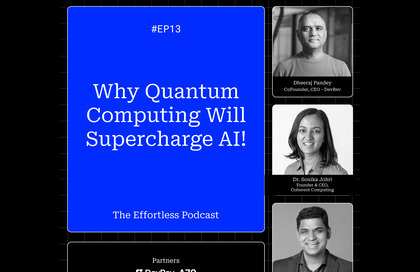

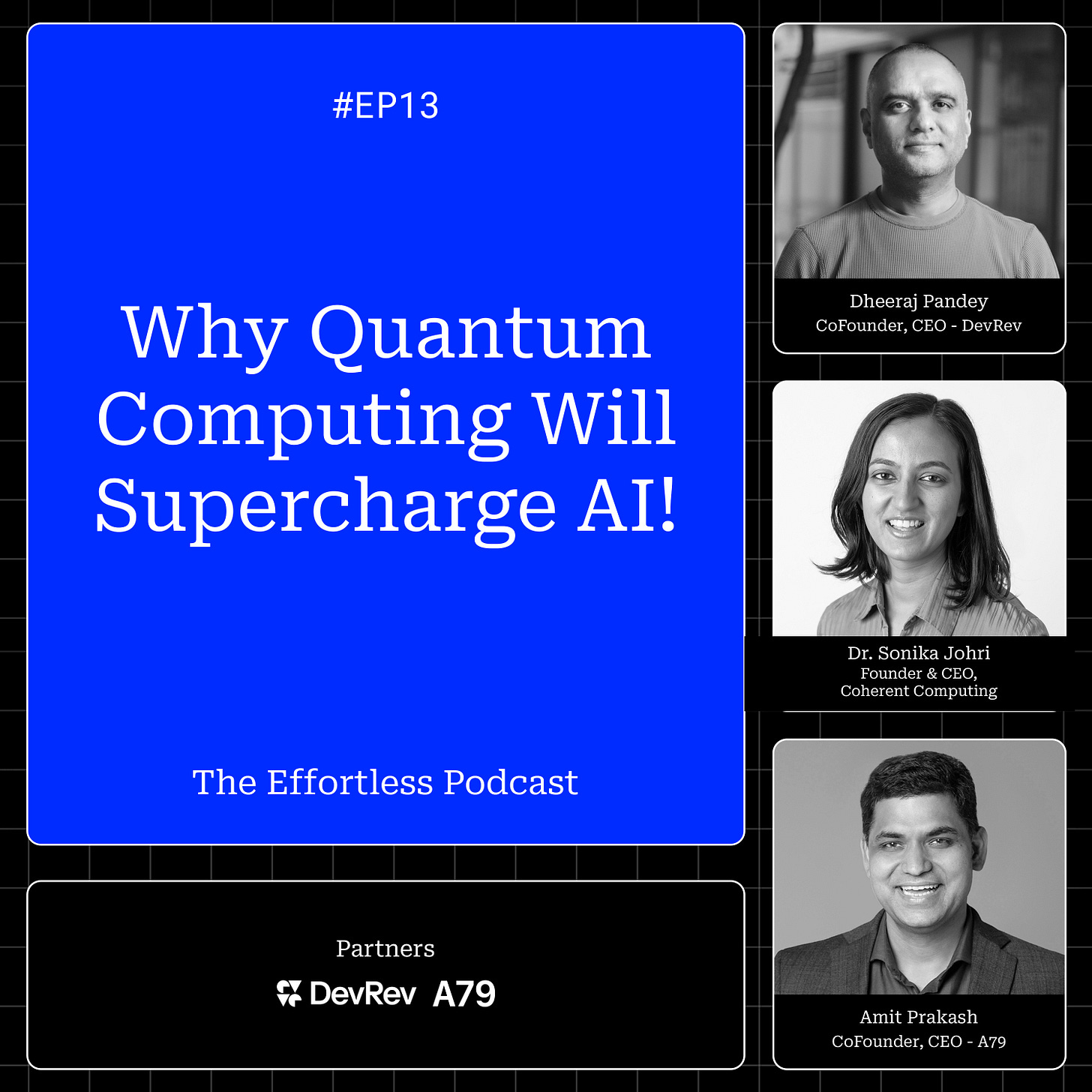

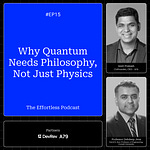
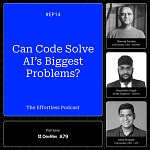


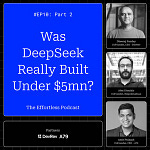
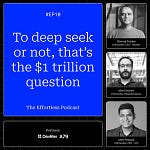
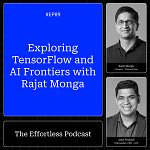
Share this post